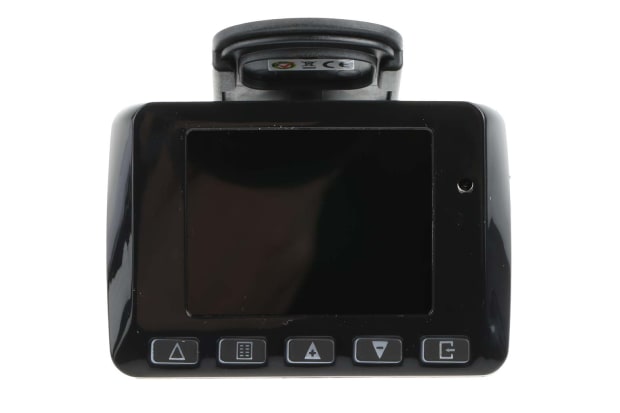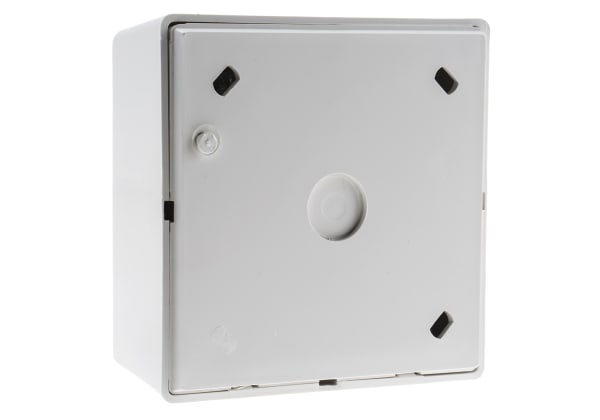- Published 19 May 2025
- Last Modified 19 May 2025
- 6 min
Understanding Embedded Systems
Embedded systems are all around us in the electronic devices we use and the industries making the products we use daily. This guide explains what embedded systems are and how they work.

Embedded system devices are all around us, found in devices that control or interact with specific electronics hardware but which we wouldn’t consider to be regular ‘computers’. These systems use sophisticated computation technology to perform dedicated functions or a set of tasks reliably.
This guide will explain the purpose of embedded systems, outline how they work, and give examples of embedded systems found throughout our lives.
What is an Embedded System?
The general definition of embedded systems is: self-contained devices that integrate hardware and software to perform a specific set of functions. They may accept user inputs, or just react to passive inputs, but they do not give the user full control of their operating system and software processing, as expected from personal computers.
What is the purpose of an embedded system? To give reliable control and quick solution of simple, specific tasks without much concern, making it seamless.
Characteristics of an Embedded System
Embedded systems comprise a huge variety of products, but they usually share these common traits:
- They have hardware and software (often as firmware) self-contained in one product.
- They can work alongside other embedded systems within common interface communication protocols shared with other control systems, handling separate tasks.
- They rely on either a microprocessor or a microcontroller for computation.
- They’re required to respond to inputs nearly immediately.
- They use instruments to respond to and control ‘real world’ things, such as central heating system, medical devices or engine valve position.
Embedded Systems Examples
Examples of embedded systems include these types of computational devices:
PLCs: Programmable logic controllers are an essential part of industrial automation and electronic products. They’re set to respond to configured inputs by triggering desired outputs, such as activating heating systems based on a detected room temperature or opening a sliding door when a person is sensed.
HMIs: Human-machine interfaces have user-friendly systems for accepting inputs. Examples are screen displays in thermostats, ATMs, and home security systems.
Process control and distributed control systems: These embedded systems reliably and efficiently handle industrial processes, such as temperature control, material feed rates, belt speed, and cutting speed. They can also sense dangerous conditions and self-shutdown to ensure worker safety.
All these types of embedded systems have simple digital interfaces like inputs and outputs. They require extensive testing for reliability of their performance, given that they’re often relied on for safety and product dependability.
Embedded System Devices
So, what are embedded systems used for?
Devices that use embedded systems include:
- Hand calculators
- Digital watches and wearable fitness trackers
- Digital cameras
- ATMs
- Building safety and security devices like fire alarms and electric door locks
- Automotive monitoring and control systems
- Modems and routers for internet signals
- Electronic thermostats for configuring home heating and cooling
- ‘Flip phones’ (mobile phones the user can’t install apps on)
- Washing machines, dryers, and dishwashers with electronic controls
- Microwaves and ovens with electronic controls
- Manufacturing devices with Internet of Things (IoT) and edge computing capabilities, such as industrial automation robots
- Point of sale payment systems
- Video game controllers and older video game consoles
Devices that contain embedded systems perform their limited functionality efficiently and reliably since they have simple hardware and software that are difficult to tamper with.
What Devices Aren’t Embedded Systems?
Despite their versatility, there are some disadvantages of embedded systems:
- Limited functionality with limited ability to add or adjust features
- Dependence on specific hardware models
- Specialised development skills
- High development costs with rigorous testing requirements
- Difficulty in debugging, maintaining, and servicing
Non-embedded systems, however, lack these shortcomings (though they’re not without their own). Examples of non-embedded systems include the following (though some people may debate whether they’re truly non-embedded):
- Laptop computers
- Desktop computers
- Tablets
- Smartphones (mobile phones that the user can install apps onto)
- Video game consoles that can have games and other apps installed at will
These all have configurable and adjustable software (and even hardware), giving the user and the technician much more control of the functionality.
How Do Embedded Systems Work?
How does an embedded system work? Embedded systems are, at their core, electronic devices like any others, just with a specific task and functionality. Their operation generally follows this sequence:
They receive inputs from external devices, like push buttons. Often integrate converting an analogue signal (such as from a pressure instrument) into a digital one.
The processor, usually a microcontroller or a microprocessor, acts on the input signal. This involves accessing simple software stored in the electronic’s memory, which is either packaged in the microcontroller or in a separate chip unit, interfaced with the processor or central processing unit.
The processor sends output signals based on how the software assessed the input signals. These outputs are transmitted to other external devices (‘actuators’) to produce the desired end control.
Embedded System Programming
What is an embedded operating system? It’s the software contained in the embedded system’s memory and which the system uses to process inputs into outputs. Embedded systems software can run various high level programming languages, however the most common ones are:
C: This is a good choice for embedded systems since it’s a low-level language that can get down to the ‘bare metal’ (software directly controlling the hardware, which is what embedded systems do).
C++: This is an object-oriented variant of C, and it’s very efficient in terms of memory and energy. This makes it good for more complex embedded systems that have limited memory and energy resources onboard. Also, C++ gives embedded systems software engineers good scalability and reusability for quickly improving on embedded system design.
Python: This language is powerful, easy to understand and use, and has been steadily increasing in popularity for various applications, including embedded systems.
Embedded System Components
The components of an embedded system typically include:
A processor: As the brain of the embedded system, the processor accesses the software from the memory and processes the inputs to determine the outputs. Embedded system processors are often either microcontrollers or microprocessors.
Memory: Memory systems onboard embedded systems can be either read-only memory (ROM) or random-access memory (RAM). ROM contains the firmware for operating the system, while RAM stores digital data information like the input values. Microcontrollers have self-contained program memory while microprocessors require external ones, though they’re still packaged in the embedded system.
Input devices: Sensors detect certain conditions and send signals into the embedded system to be acted on. These instruments can be for detecting changes in environmental conditions, liquid or gas pressure, mechanical motion, fluid flow, or they can simply be push-buttons awaiting user input.
Output devices: Also known as actuators, these devices execute the desired function of the embedded systems. They can produce motion in valves, motors, or solenoids, or give off light, sound, or heat.
I/O interfaces: I/O (input/output) connectors let all these components talk to each other. Since embedded systems react to and then affect their surroundings, they need to convert physical signals (analogue) into ones and zeroes (digital) and back again. This happens using an established communication protocol, such as inter-integrated circuits (I2C), universal asynchronous receiver-transmitters (UART), or serial peripheral interfaces (SPI).
Using Embedded Systems
The I/O connections of embedded systems enable the Industrial Internet of Things (IIoT) because they can connect physical devices to global communications. Embedded systems have long been great for self-contained appliances around the house, but their capability extends further, from the advanced devices we wear and use every day to IIoT-enabled industrial devices in manufacturing.
Embedded systems in industrial robots can perform edge computing: processing and acting on inputs using a computer near the input itself, and sending info on these conditions to broader networks, which in turn give inputs to other devices’ embedded systems. All this enables the connectivity, efficiencies, and capabilities of Industry 4.0.

Many RS product lines feature embedded systems, such as our car technology for enhancing your driving experience. Browse our selection today.


